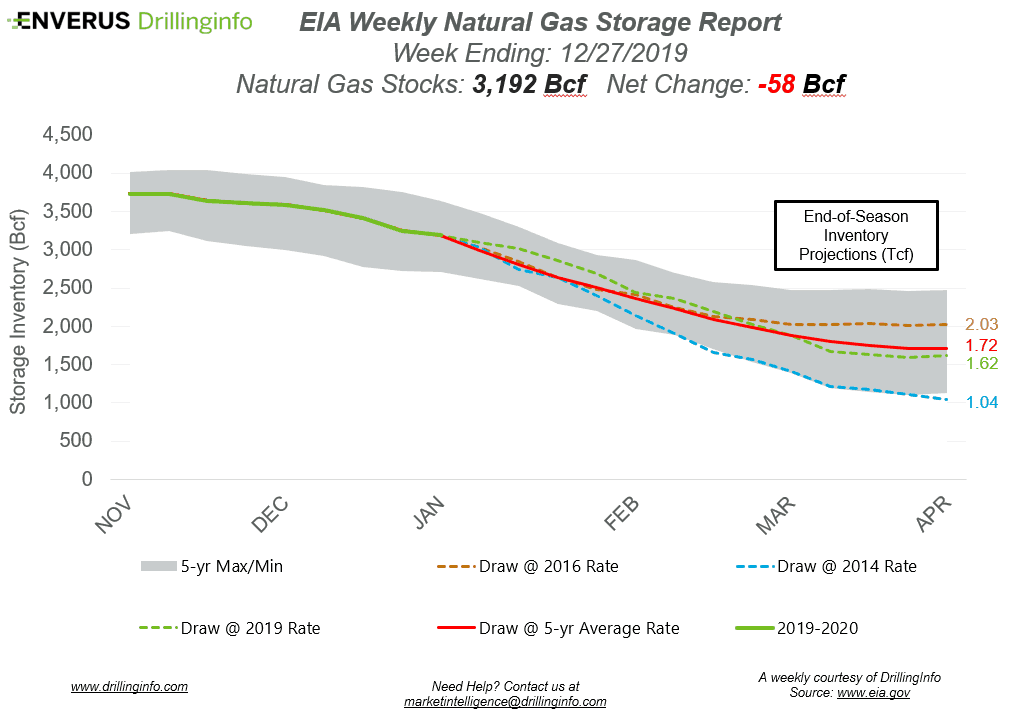[contextly_auto_sidebar]
Natural gas storage inventories decreased 58 Bcf for the week ending December 27, according to the EIA’s weekly report. This was below the market expectation, which was a draw of 61 Bcf.
Working gas storage inventories now sit at 3.192 Tcf, which is 484 Bcf above inventories from the same time last year and 38 Bcf below the five-year average.
Prior to the storage report release, the February 2020 contract was trading at $2.124/MMBtu, roughly $0.002 above yesterday’s close. After the release of the report, the February 2020 contract was trading at $2.148/MMBtu.
Another week and much of the same story in the natural gas market. Prices continue to be weak on a lack of heating demand. The market is mainly trading on weather forecasts, and the forecasts haven’t been able to help prices, as they have been showing mostly warmer-than-normal temperatures. Current forecasts show a very brief period of near-normal temperatures in the short term (one to five days), but then they go back to warmer temperatures in the long-term outlook (six to 14 days). For insight into price action going forward, continue to monitor changes in the weather forecasts, as those changes will be the main drivers of volatility.
See the chart below for projections of the end-of-season storage inventories as of April 1, 2020, the end of the withdrawal season.
This Week in Fundamentals
The summary below is based on Bloomberg’s flow data and DI analysis for the week ending January 3.
Supply:
- Dry production increased 0.20 Bcf/d on the week. Most of the increase came from the South Central Region (+0.42 Bcf/d) and the East (+0.07 Bcf/d), with an offset coming from the Mountain Region (-0.32 Bcf/d). The Pacific and Midwest both saw relatively small increases.
- Canadian net imports decreased 0.23 Bcf/d.
Demand:
- Domestic natural gas demand decreased 1.62 Bcf/d week over week. Power demand accounted for majority of the decrease, falling 1.00 Bcf/d on the week. Res/Com and Industrial demand also decreased, falling 0.52 Bcf/d and 0.09 Bcf/d, respectively.
- LNG exports increased 0.16 Bcf/d. Mexican exports decreased 0.11 Bcf/d.
Total supply slightly decreased by 0.04 Bcf/d, while total demand decreased 1.60 Bcf/d week over week. With a decrease in demand and minimal change in supply, expect the EIA to report a weaker draw next week. The ICE Financial Weekly Index report is currently expecting a draw of 70 Bcf. Last year, the same week saw a draw of 91 Bcf; the five-year average is a draw of 201 Bcf.

